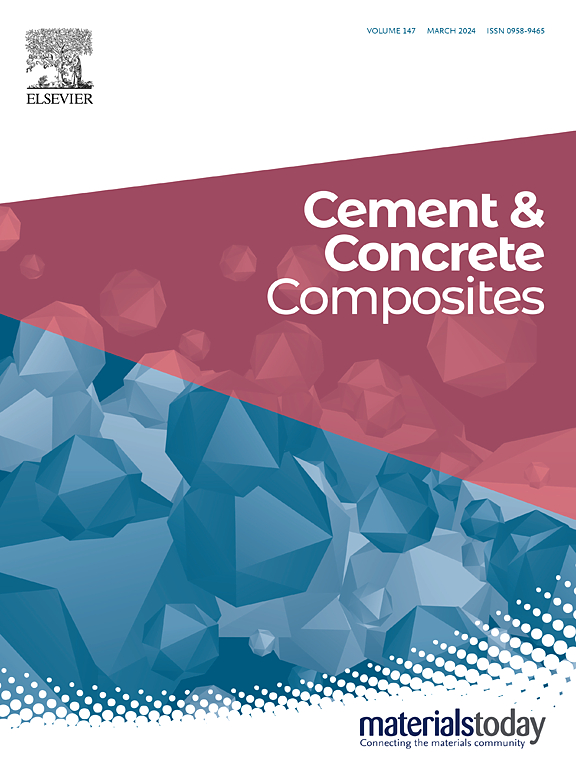Studying water permeation behavior of cracked ECC based on lattice Boltzmann method and X-ray computed tomography
IF 13.1
1区 工程技术
Q1 CONSTRUCTION & BUILDING TECHNOLOGY
引用次数: 0
Abstract
Engineered Cementitious Composites (ECC) are high-performance cementitious materials that exhibit multiple cracking and self-controlled width under uniaxial loading, which can lead to a low permeability. Quantifying the water flow behavior of an ECC crack is a precondition for its practical application. However, the lack of characterization for internal crack profiles and advanced modeling for water flow behavior leads to unsatisfactory permeation predictions. Focusing on these two shortages, this study characterized and reconstructed the inner 3D crack profiles based on X-CT technology and, in combination with lattice Boltzmann method (LBM), simulated the water flow behavior in an ECC crack. According to permeation test on an ECC crack, a width reduction factor of 0.67 should be adopted for permeation prediction of this particular ECC sample in the present experiments. By considering rough surfaces, numerous bridging fibers and fragmented matrix blocks in the simulation, good agreement between simulation and test results was achieved. Based on the proposed modeling approach, the impact of crack width on permeability was then discussed. Moreover, a quantitative investigation on the effect of these three geometric elements revealed that rough surfaces, fiber diameter and volume fraction are critical factors that cannot be ignored when determining the width reduction factor.
基于格子玻尔兹曼方法和x射线计算机断层扫描的开裂ECC水渗透行为研究
工程胶凝复合材料(ECC)是一种高性能胶凝材料,在单轴载荷作用下具有多重裂缝和自控制宽度,可导致低渗透率。对ECC裂缝的水流特性进行量化是其实际应用的前提。然而,由于缺乏对内部裂缝剖面的表征和对水流行为的先进建模,导致渗透率预测不令人满意。针对这两个不足,本研究基于X-CT技术对ECC裂缝内部三维轮廓进行了表征和重构,并结合晶格玻尔兹曼方法(LBM)模拟了ECC裂缝中的水流行为。根据某ECC裂缝的渗透试验,本实验对该特定ECC试样的渗透预测应采用宽度折减系数0.67。仿真中考虑了粗糙表面、大量桥接纤维和破碎的基体块,仿真结果与试验结果吻合较好。在此基础上,讨论了裂缝宽度对渗透率的影响。此外,对这三种几何因素的影响进行了定量研究,发现粗糙表面、纤维直径和体积分数是确定宽度折减系数时不可忽视的关键因素。
本文章由计算机程序翻译,如有差异,请以英文原文为准。
求助全文
约1分钟内获得全文
求助全文
来源期刊

Cement & concrete composites
工程技术-材料科学:复合
CiteScore
18.70
自引率
11.40%
发文量
459
审稿时长
65 days
期刊介绍:
Cement & concrete composites focuses on advancements in cement-concrete composite technology and the production, use, and performance of cement-based construction materials. It covers a wide range of materials, including fiber-reinforced composites, polymer composites, ferrocement, and those incorporating special aggregates or waste materials. Major themes include microstructure, material properties, testing, durability, mechanics, modeling, design, fabrication, and practical applications. The journal welcomes papers on structural behavior, field studies, repair and maintenance, serviceability, and sustainability. It aims to enhance understanding, provide a platform for unconventional materials, promote low-cost energy-saving materials, and bridge the gap between materials science, engineering, and construction. Special issues on emerging topics are also published to encourage collaboration between materials scientists, engineers, designers, and fabricators.
 求助内容:
求助内容: 应助结果提醒方式:
应助结果提醒方式:


